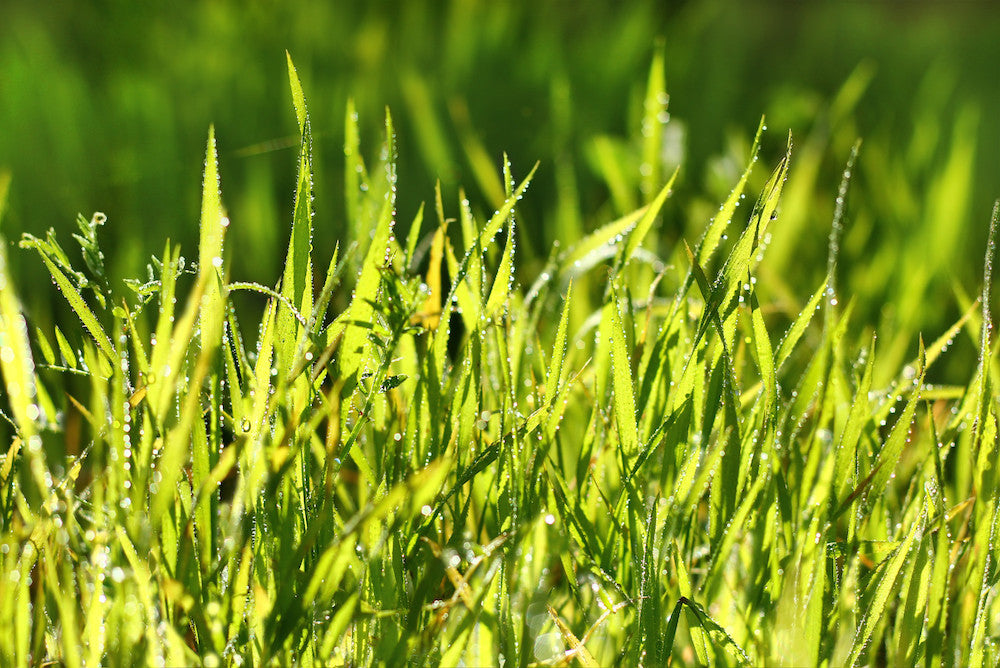Are you searching for the best fertilizer for centipede grass in South Carolina? Look no further than Lawn Synergy's range of lawn fertilizers!
Our expertise in lawn care technology ensures optimal results for DIY enthusiasts like you.
In this article, we'll delve into the nuances of centipede grass care specific to the South Carolina climate. From fertilization techniques to pest control strategies, we'll provide actionable insights backed by expert knowledge and real-world experience.
Say goodbye to mediocre results and hello to a vibrant, healthy lawn.
Let's explore how you can achieve lawn perfection with the right fertilizer tailored for centipede grass in South Carolina.
What this article covers:- What Is Centipede Grass?
- Centipede Grass Characteristics to Consider
- How to Fertilize Centipede Grass
- Centipede Grass Fertilizer Schedule
- Pros and Cons of Centipede Grass
- How to Water Centipede Grass
- How to Apply Soil Amendments to Centipede Grass
What Is Centipede Grass?
Centipede grass, celebrated for its adaptability to South Carolina's warm and humid weather, is a top pick among homeowners for its low maintenance needs and lush appearance.
Its robust nature extends to its resistance against common lawn pests and diseases, ensuring a vibrant green lawn year-round and showing homeowners how to get grass to grow successfully in the region.

According to The Spruce, this grass variety boasts a medium texture, offering a soft and inviting feel underfoot. Its robust nature extends to its resistance against common lawn pests and diseases, ensuring a vibrant green lawn year-round.
At Lawn Synergy, we recognize the allure of centipede grass and aim to provide solutions tailored to its unique needs.
Centipede Grass Characteristics to Consider
When it comes to centipede grass, there are several key characteristics that make it an ideal choice for South Carolina lawns. Here's what you need to know:
- Heat Tolerance: Centipede grass thrives in South Carolina's warm climate, exhibiting exceptional heat tolerance. This means it can withstand high temperatures without losing its vibrant green color or suffering significant damage.
- Minimal Watering Requirements: Compared to other turfgrass varieties, centipede grass requires minimal watering to maintain its lush appearance. Its deep root system allows it to access moisture from lower soil levels, reducing the need for frequent irrigation.
- Slow Growth Rate: Centipede grass has a slow growth rate, resulting in less frequent mowing sessions for homeowners. This characteristic not only saves time but also reduces the effort required for lawn maintenance, making it an attractive option for busy individuals.
In summary, centipede grass offers South Carolina homeowners a resilient and low-maintenance lawn solution, thanks to its heat tolerance, minimal watering requirements, and slow growth rate.
How to Fertilize Centipede Grass
Fertilizing centipede grass is essential for maintaining a lush and healthy lawn, and at Lawn Synergy, we're here to guide you through the process.
- Choose The Right Fertilizer: Emerald 10-0-20 and 0-0-4 Nutrigreen are two perfect blends for Centipede grass. With lower nitrogen content, micros, iron, and bios, centipede grass thrives with a darker green color.This ensures that your centipede grass receives the necessary nutrients for robust development, including yellow grass fertilizer to enhance its green hue.
- Timing Is Key: Start off with Guardian 13-0-10 pre-emergent fertilizer and then alternating between Emerald and Nutrigreen every 6 weeks.
- Follow Soil Test Recommendations: Soil testing provides valuable insights into your lawn's nutrient needs. Tailor your fertilization schedule and dosage based on these recommendations to achieve optimal results and avoid over-fertilization.
At Lawn Synergy, we offer a range of professional-grade lawn fertilizers tailored to meet your centipede grass's specific needs.
Our products are formulated to deliver essential nutrients, promoting vibrant growth and resilience.
Visit our lawn fertilizer collection to discover the perfect solution for your lawn care routine.
Centipede Grass Fertilizer Schedule
February 1st. - Safeguard 0-0-7 Pre-emergent Fertilizer
April 1st. - Guardian 13-0-10 Pre-emergent Fertilizer
May 1st. - Emerald 10-0-20 Lawn Fertilizer with Iron
June 15th. - Nutrigreen 0-0-4 with micros
August 1st. - Emerald 10-0-20 Lawn Fertilizer with Iron
September 1st. - Guardian 13-0-10 Pre-emergent Fertilizer
November 1st. - Nutirgreen 0-0-4 with micros
Pros and Cons of Centipede Grass
At Lawn Synergy, we understand the importance of weighing the pros and cons before choosing centipede grass for your lawn. Let's explore its advantages and disadvantages.

Pros:
Low Maintenance Requirements
Centipede grass boasts minimal upkeep needs, making it an attractive option for homeowners seeking a lush lawn without extensive maintenance.
Its ability to thrive in various soil conditions contributes to its low-maintenance nature.
Excellent Heat Tolerance
One of centipede grass's notable strengths is its exceptional heat tolerance. Even in scorching summer temperatures, this grass variety maintains its green hue, providing a visually appealing landscape year-round.
Natural Resistance To pests And Diseases
Centipede grass exhibits a natural resistance to common lawn pests and diseases, reducing the need for chemical treatments.
This inherent resilience contributes to a healthier lawn environment, promoting sustainable lawn care practices.
Cons:
Slow Growth Rate
While centipede grass requires minimal maintenance, its slow growth rate can be a drawback for homeowners seeking rapid establishment of their lawn.
Patience is necessary when cultivating centipede grass, as it may take longer to achieve desired coverage compared to other grass species.
Susceptible To Cold Damage In Northern Regions
Centipede grass thrives in warmer climates and is susceptible to damage from cold temperatures, particularly in northern regions with harsh winters.
Homeowners in colder climates should consider this factor before selecting centipede grass for their lawns.
Limited Shade Tolerance
One of the limitations of centipede grass is its reduced tolerance to shade.
In areas with extensive tree coverage or buildings casting shadows, centipede grass may struggle to thrive, leading to patchy or thin lawn coverage.
How to Water Centipede Grass
Proper watering is crucial for maintaining a healthy centipede grass lawn, and at Lawn Synergy, we're here to guide you through the process.
- Frequency: Centipede grass prefers infrequent but deep watering sessions. Aim to water your lawn deeply once a week, providing approximately 1 inch of water. This encourages deep root growth and enhances the grass's ability to withstand drought conditions.
- Timing: Water your centipede grass early in the morning to minimize water loss through evaporation. Avoid watering in the evening, as prolonged moisture on the grass blades can increase the risk of fungal diseases.
- Moisture Levels: Monitor the soil moisture regularly to ensure it remains consistently moist but not waterlogged. Overwatering can lead to shallow root development and increase the risk of pest infestations and diseases.
By following these watering guidelines, you can promote optimal growth and resilience in your centipede grass lawn, ensuring a vibrant and lush landscape for years to come.

How to Apply Soil Amendments to Centipede Grass
At Lawn Synergy, we understand the importance of proper soil management for maintaining a healthy centipedegrass lawn, as is demonstrated by our lawn soil conditioner.
- Soil Testing: Begin by conducting a soil test to assess the pH level and nutrient composition of your soil. This will determine if any amendments, such as lime, are needed to optimize soil conditions for centipede grass growth, as well as determining the best grass seed mix that might be needed for overseeding.
- Optimal pH Level: Centipede grass thrives in slightly acidic soil with a pH range of 5.0 to 6.0. If your soil pH falls outside this range, amendments may be necessary to adjust it accordingly.
- Application Of Lime: If the soil test indicates a need for lime to raise the pH level, apply it as directed. Spread lime evenly over the lawn using a spreader, following the recommended application rates based on your soil test results. For fast acting lime, please see our Phast Cal Lime product.
- Low CEC: If the soil test indicates low cec level,apply carbon based products such as Carbon Pro G to increase cec level. Higher cec levels optimize nutrient uptake.
-
Timing: It's essential to apply soil amendments at the right time for optimal effectiveness.
Aim to apply lime or other soil amendments during periods of active growth for centipedegrass, typically in the spring or fall. However, if corrections need to be made, they can be made at any time of the year.
By following these steps and providing the necessary soil amendments, you can ensure that your centipedegrass lawn remains healthy and vibrant throughout the year.
Conclusion
Gardening enthusiasts in South Carolina seeking vibrant centipede grass should prioritize timely fertilization.
By following a maintenance calendar tailored to centipede grass, ensuring proper soil pH, and applying fertilizer during optimal conditions, homeowners can nurture a thriving lawn. Centipede grass flourishes with infrequent fertilization and ample hydration, promoting its resilience against pests and diseases.
As Lawn Synergy emphasizes professional-grade lawn care, our fertilizer subscription program simplifies the process, delivering expertly formulated products to your doorstep.
For effortless lawn maintenance, consider our lawn care subscription, providing tailored fertilization schedules and premium products.
Elevate your lawn care routine with Lawn Synergy and revel in the beauty of your lush centipede grass lawn.
If you want to learn more, why not check out our related posts:
- Fertilizer for Bahia Grass in Florida
- Weed Killer for Bermuda Grass
- When to Fertilize New Fescue Grass
- Best Weed and Feed Fertilizer for St Augustine Grass
- Fertilizer for Mondo Grass
- Best Lawn Fertilizer
- Best New Lawn Fertilizer
- Best Organic Fertilizer for Lawn
- Best Weed and Feed for Lawns
- Best Lawn Fertilizer for Texas
- Best Lawn Fertilizer for Florida
- Best Fertilizer for Clay Soil Lawn
- Best Iron Fertilizer for Lawn
- Best Lawn Fertilizer for Sandy Soil


